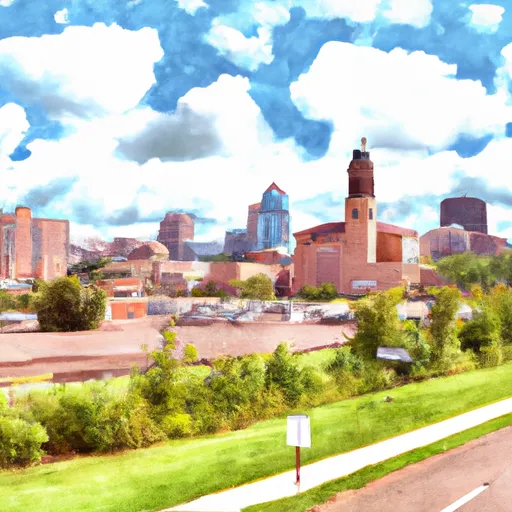-
 Snoflo Premium
Snoflo Premium
Get unlimited access to all our content
With no Ad interruptions! - Start Your Free Trial Login with existing account
Saint-Francis
Eden Index
Climate
6.3
•
Recreation
4.1
•
Community
3.2
•
Safeguard
4.7/10

Saint Francis is a small city located in Anoka County, Minnesota. The region experiences a humid continental climate, characterized by cold winters and warm summers. The average temperature in winter ranges from 5°F to 25°F, while in summer, temperatures can reach 80°F to 90°F. The area receives moderate precipitation throughout the year, with an annual average of around 30 inches.
Hydrology constituents in Saint Francis include the Rum River and several smaller lakes and wetlands. The Rum River, which flows through the city, provides opportunities for activities like fishing, canoeing, and kayaking. The lakes and wetlands offer additional fishing and boating options, and also create a picturesque setting for hiking and birdwatching.
Outdoor recreation enthusiasts in Saint Francis can explore the nearby Carlos Avery Wildlife Management Area, a sprawling nature reserve with diverse habitats. It offers opportunities for hunting, wildlife viewing, and photography. The Rum River Central Regional Park provides facilities for picnicking, camping, and hiking, while the nearby St. Francis Regional Park offers playgrounds, sports fields, and trails for walking or biking. With its favorable climate and diverse outdoor attractions, Saint Francis provides ample opportunities for residents and visitors to enjoy nature and engage in various recreational activities.
What is the Eden Index?
The Snoflo Eden Index serves as a comprehensive rating system for regions, evaluating their desirability through a holistic assessment of climate health, outdoor recreation opportunities, and natural disaster risk, acknowledging the profound impact of these factors on livability and well-being.
Climate Health Indicator (CHI): 6.3
Saint-Francis receives approximately
883mm of rain per year,
with humidity levels near 84%
and air temperatures averaging around
7°C.
Saint-Francis has a plant hardyness factor of
4, meaning
plants and agriculture in this region thrive during a short period during spring and early summer. Most
plants will die off during the colder winter months.
By considering the ideal temperature range, reliable water supplies, clean air, and stable seasonal rain or snowpacks, the Climate Health Indicator (CHI) underscores the significance of a healthy climate as the foundation for quality living.
A healthy climate is paramount for ensuring a high quality of life and livability in a region, fostering both physical well-being and environmental harmony. This can be characterized by ideal temperatures, reliable access to water supplies, clean air, and consistent seasonal rain or snowpacks.
Weather Forecast
Streamflow Conditions
Upper Mississippi-Crow-Rum
Area Rivers
Upper Mississippi-Crow-Rum
Snowpack Depths
Upper Mississippi-Crow-Rum
Reservoir Storage Capacity
Upper Mississippi-Crow-Rum
Groundwater Levels
Recreational Opportunity Index (ROI): 4.1
The Recreational Opportunity Index (ROI) recognizes the value of outdoor recreational options, such as parks, hiking trails, camping sites, and fishing spots, while acknowledging that climate plays a pivotal role in ensuring the comfort and consistency of these experiences.
Access to outdoor recreational opportunities, encompassing activities such as parks, hiking, camping, and fishing, is crucial for overall well-being, and the climate plays a pivotal role in enabling and enhancing these experiences, ensuring that individuals can engage in nature-based activities comfortably and consistently.
Camping Areas
| Campground | Campsites | Reservations | Toilets | Showers | Elevation |
|---|---|---|---|---|---|
| Riverside City Park - Princeton | None | 956 ft | |||
| Clubhouse | 55 | 1,434 ft | |||
| Snake River City Campground | 12 | 1,257 ft | |||
| Lofgren Memorial Park | 12 | 1,101 ft | |||
| Itasca County Fairgrounds | None | 1,302 ft | |||
| Father Hennepin State Park | 100 | 1,313 ft | |||
| Pokegama Rec Area | 21 | 1,291 ft | |||
| Button Box ? George Washington State Forest | 12 | 1,400 ft | |||
| Bass Lake | None | 1,445 ft | |||
| American Legion Park - Warba | None | 1,294 ft |
Nearby Ski Areas
Catastrophe Safeguard Index (CSI):
The Catastrophe Safeguard Index (CSI) recognizes that natural disaster risk, encompassing floods, fires, hurricanes, and tornadoes, can drastically affect safety and the overall appeal of an area.
The level of natural disaster risk in a region significantly affects safety and the overall livability, with climate change amplifying these risks by potentially increasing the frequency and intensity of events like floods, fires, hurricanes, and tornadoes, thereby posing substantial challenges to community resilience and well-being.
Community Resilience Indicator (CRI): 3.2
The Community Resilience Indicator (CRI) recognizes that education, healthcare, and socioeconomics are crucial to the well-being of a region. The CRI acknowledges the profound impact of these elements on residents' overall quality of life. By evaluating educational resources, healthcare accessibility, and economic inclusivity, the index captures the essential aspects that contribute to a thriving community, fostering resident satisfaction, equity, and social cohesion.

